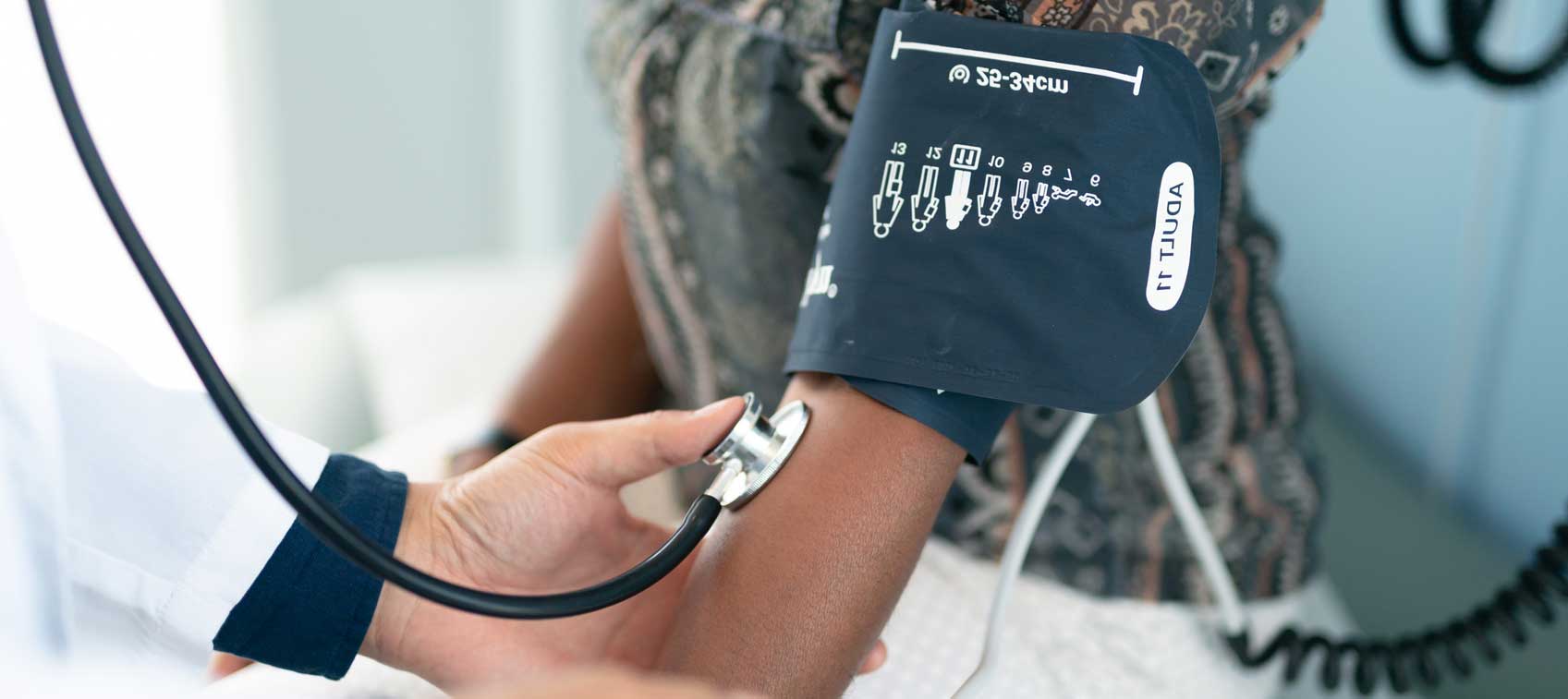
When you are concerned about your blood pressure, it’s normal to want to lower it as fast as you can. It certainly won’t be instant, but it is possible to lower your blood pressure quickly.
With certain changes to your daily habits, it is certainly possible to lower your blood pressure, keep it down, and maintain regular blood pressure without sudden spikes.
What is Blood Pressure?
The heart’s most important function is to pump blood throughout the body to supply the organs and tissue with the blood they need to function.
Each beat of your heart pumps blood into the circulatory system’s large blood vessels. In the blood’s journey through the body, it puts pressure on the walls of your blood vessels.
Blood pressure readings are how this pressure is measured, and it is made up of two values:
- Systolic blood pressure (commonly called the “top number”) is the pressure from when your heart beats. The heart contracts or squeezes as all muscles do, and it pumps the oxygen-rich blood into your blood vessels that your body needs and uses to function.
- Diastolic blood pressure (commonly called the “bottom number”) is the pressure that occurs when the heart relaxes after its contracted state. This number is always lower than the systolic pressure.
As with anything we have to measure, blood pressure has a unit of measurement. Just as your heart rate is measured by beats per minute, your blood pressure is measured in units of millimeters of mercury (mmHg). Your systolic and diastolic numbers are always given as a pair.
The systolic is first, and it is followed by the diastolic. It is given as a ratio, so it is normal for you to hear it said as the systolic number over the diastolic number.
For example, if a person has a blood pressure of 125/76 mmHg. It will likely be said as, “125 over 76”, and it means that the systolic number is 125 mmHg and that the diastolic number is 76 mmHg.
Together, these numbers give the full picture of the pressure on the blood vessel walls for the duration of an entire beat cycle.
What is Normal? What is Abnormal?
A normal blood pressure level is at or under 120/80 mmHg. Your blood pressure changes throughout the day based on your activity.
That is why it is common to measure blood pressure when you are sitting down, and it is also why you are asked to relax when your blood pressure is taken. If your blood pressure levels are consistently above the normal level, there may be cause for concern.
Maintaining healthy blood pressure levels is recommended for all ages. Higher than normal blood pressure levels can be indicative of other health problems. Your doctor will talk to you about your blood pressure levels, and it may be recommended that you lower your blood pressure to a more normal level.
Lower than normal blood pressures are also concerning. If your readings are consistently lower than 90/60 mmHg, this would be considered a low blood pressure level. A sudden drop in blood pressure can be dangerous for the individual.
Abnormal levels of blood pressure should be discussed with your doctor. You may be asked to monitor your blood pressure levels at home at various times throughout the day to get a better picture of your overall levels during a longer period of time.
This will help your doctor monitor your levels and make the necessary assessments based on data.
Take the Right Reading
Accurate readings are the best way to make the right assessments of your blood pressure levels. In the event that you are asked to monitor and record your own readings at home, it’s important to know how to take the right reading.
Here’s what you should know:
- Set up for success—Make sure to have the right cuff size. A small cuff can cause an inaccurately higher reading. You also should not cross your legs during your reading, and it’s important to relax your body for the duration of your reading.
- Rest before your readings—Standing up and walking around before a reading can cause an artificially inflated number.
- Manage stress and anxiety—Try to remain calm before and during your readings. If you struggle to do this, try to do something that will relax you, like meditation.
- Just say NO...to smoking—Nicotine can increase blood pressure levels for up to 30 minutes after smoking. Refraining for at least that before your readings will give you a more accurate reading.
- Empty the bladder—Go ahead and go. A full bladder can elevate your blood pressure slightly.
- Shhh...remain quiet—Talking during your reading can cause your levels to go up.
- Avoid alcohol and caffeine—Both of these substances can raise your blood pressure levels. Drinking excessive alcohol can increase high blood pressure. Abstaining from alcohol on the day of your reading can give you a more accurate reading.
Healthy Helpings
The way we eat impacts the way we feel. Food is our fuel, so giving our bodies the right fuel is always a good part of a healthy lifestyle.
When it comes to encouraging normal blood pressure levels, your diet can be a good place to start. A healthy diet is no guarantee that you will avoid medication, but it’s a best practice to give your body the best chance at normalizing your blood pressure levels naturally.
Eating a nutritious and balanced diet can significantly improve your levels. Some things you can try to impact your results include:
- Lower sodium intake—Sodium is a necessary component in your body, but your body may not need as much as it is getting. Too much sodium can contribute to high blood pressure. It’s best to check your labels and aim for 2,300 milligrams of sodium or less per day.
- Lower sugar intake—Foods with large amounts of sugar may increase your blood pressure and cause weight gain, which is also impactful. It’s also common for high sugar foods to contain more sodium. Another reason to read labels.
- Lower fat intake—Fat is another important part of a healthy diet, but it should be the right kinds of fat and the right portions. Avoid trans and saturated fats.
- More balance—With all the foods that you’re reducing, it’s nice to know that there are foods that you can eat more of. Increase your variety with whole grains, vegetables, seeds, nuts, and low-fat proteins.
Daily Exercise
Increasing your daily activity level is part of any healthy lifestyle.
The CDC recommends that adults strive for at least 150 minutes of moderate exercise each week. This can be incorporated into your routine with just 30 minutes per day 5 days per week. Practice any physical exercise, such as a walk, to help get you up and moving.
Consider Adding Supplements
It may be possible to boost your efforts to lower your blood pressure with certain supplements. It’s important to talk to your doctor or pharmacist before you make any changes to your regimen with supplements to be sure that it is safe for you to take.
This will help you to make sure that your supplements don’t conflict with any medications you may be taking.
Potassium
Potassium supplementation may help support healthy top and lower numbers. Potassium encourages the removal of sodium from the body through the urine, and it promotes relaxation in the walls of the blood vessels.
Magnesium
Magnesium is a mineral that plays an important role throughout your body. It can help regulate your blood pressure levels, and it supports many of the body’s processes in various systems. It’s involved in processes like muscle and nerve function and the immune system.
Fiber
Fiber is so important, and it plays an important role in keeping your heart and gut healthy. It can help lower your cholesterol levels, improve blood pressure level numbers, and encourage proper bowel movements.
It is recommended that people consume around 25g of fiber each day.
This is not an amount that the average person in the United States typically consumes, and it may be that a fiber supplement is a good alternative to get close to this recommended number.
There are other supplements that may aid your efforts to lower your blood pressure levels that you can discuss with your physician, such as cocoa, garlic, and probiotics.
It is also important to remember that supplements, even when approved by your doctor, should accompany the other healthy efforts you are making to lower your blood pressure and live a healthier life in general.
Summary
Abnormal blood pressure results can be alarming, and with about 45% of adults in the United States having high blood pressure levels, it is important to know what you can do to help lower blood pressure quickly and effectively.
Knowing how to take an accurate reading, consuming a healthy diet, and supplementing in areas that can aid in your efforts can help you and your doctor get a better picture of what your blood pressure levels say about you and make the right adjustments to help you live the healthiest life you can.


